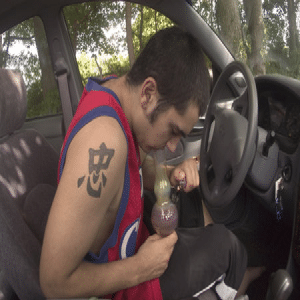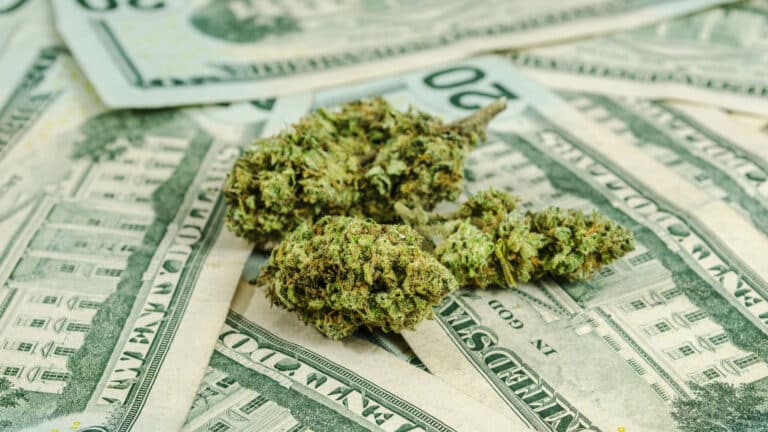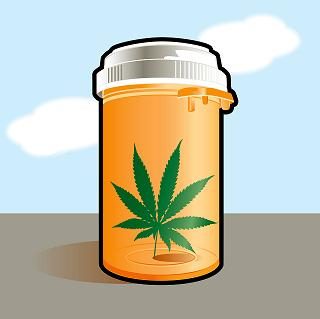
More Teens Are Driving Under The Influence Of Marijuana Than Alcohol
In a perfect world, teenagers would never make bad decisions. However, as any adult will tell you, everyone makes bad decisions when they are teenagers. Teenagers think that they know everything (I know I did), and that they are invincible. There are countless teenagers that drive under the influence. Again, in a perfect world, teenagers would never drive under the influence. But if I was forced to decide between alcohol and marijuana, I would much rather have a teenager behind the wheel that has taken a couple of hits off the bong than a teenager that has been binge drinking.
A new report shows that ’19 percent of teen drivers have driven under the influence of marijuana–more than those who have driven after drinking, at 13 percent.’ Obviously we would like the number to be zero for all citizens on our roads for all substances, but again if I was forced to choose, I would much prefer marijuana to be at 19 percent and alcohol to be lower. Below is a study that talks about the reduced traffic deaths in states that have medical marijuana, and some reasons behind it which support my reasoning:
Study shows medical marijuana laws reduce traffic deaths
Leads to lower consumption of alcohol
A groundbreaking new study shows that laws legalizing medical marijuana have resulted in a nearly nine percent drop in traffic deaths and a five percent reduction in beer sales.
“Our research suggests that the legalization of medical marijuana reduces traffic fatalities through reducing alcohol consumption by young adults,” said Daniel Rees, professor of economics at the University of Colorado Denver who co-authored the study with D. Mark Anderson, assistant professor of economics at Montana State University.
The researchers collected data from a variety of sources including the National Survey on Drug Use and Health, the Behavioral Risk Factor Surveillance System, and the Fatality Analysis Reporting System.
The study is the first to examine the relationship between the legalization of medical marijuana and traffic deaths.
“We were astounded by how little is known about the effects of legalizing medical marijuana,” Rees said. “We looked into traffic fatalities because there is good data, and the data allow us to test whether alcohol was a factor.”
Anderson noted that traffic deaths are significant from a policy standpoint.
“Traffic fatalities are an important outcome from a policy perspective because they represent the leading cause of death among Americans ages five to 34,” he said.
The economists analyzed traffic fatalities nationwide, including the 13 states that legalized medical marijuana between 1990 and 2009. In those states, they found evidence that alcohol consumption by 20- through 29-year-olds went down, resulting in fewer deaths on the road.
The economists noted that simulator studies conducted by previous researchers suggest that drivers under the influence of alcohol tend to underestimate how badly their skills are impaired. They drive faster and take more risks. In contrast, these studies show that drivers under the influence of marijuana tend to avoid risks. However, Rees and Anderson cautioned that legalization of medical marijuana may result in fewer traffic deaths because it’s typically used in private, while alcohol is often consumed at bars and restaurants.
“I think this is a very timely study given all the medical marijuana laws being passed or under consideration,” Anderson said. “These policies have not been research-based thus far and our research shows some of the social effects of these laws. Our results suggest a direct link between marijuana and alcohol consumption.”
The study also examined marijuana use in three states that legalized medical marijuana in the mid-2000s, Montana, Rhode Island, and Vermont. Marijuana use by adults increased after legalization in Montana and Rhode Island, but not in Vermont. There was no evidence that marijuana use by minors increased.
Opponents of medical marijuana believe that legalization leads to increased use of marijuana by minors.
According to Rees and Anderson, the majority of registered medical marijuana patients in Arizona and Colorado are male. In Arizona, 75 percent of registered patients are male; in Colorado, 68 percent are male. Many are under the age of 40. For instance, 48 percent of registered patients in Montana are under 40.
“Although we make no policy recommendations, it certainly appears as though medical marijuana laws are making our highways safer,” Rees said.
The study is entitled, “Medical Marijuana Laws, Traffic Fatalities, and Alcohol Consumption.”
Below is a great explanation from Time Magazine explaining why marijuana use is not as bad as alcohol use when driving a vehicle:
Driving under the influence of marijuana seems to be less risky because people who are high tend to be aware that they are impaired and compensate, while alcohol tends to increase recklessness and create false confidence. Also, people are more likely to smoke weed at home or in private, rather than out at bars or other public events that require driving to get to.








